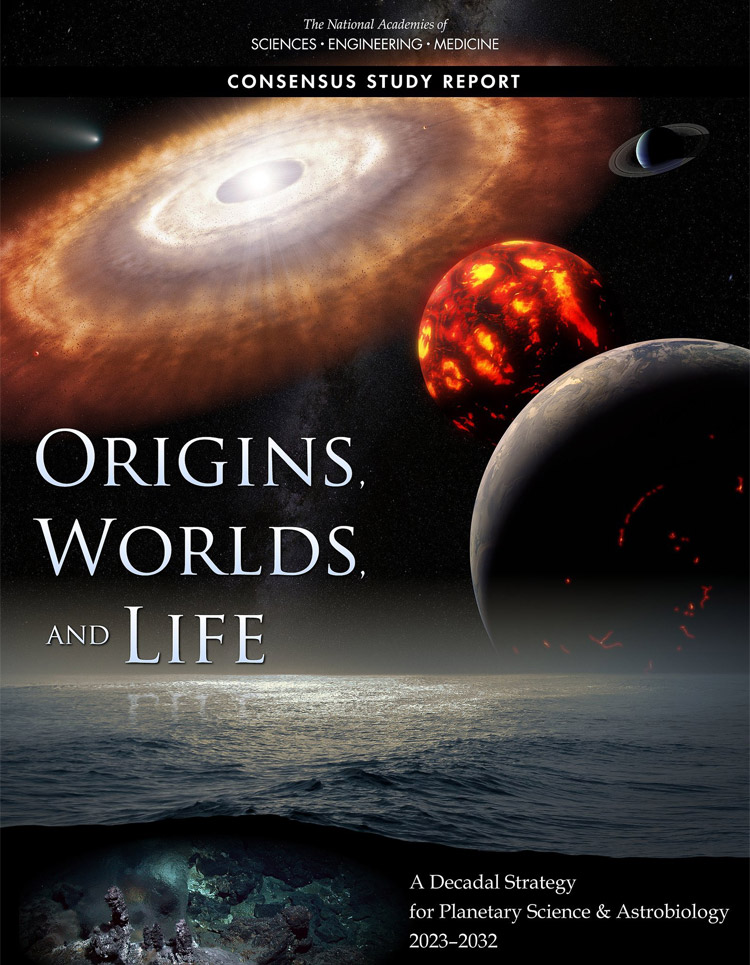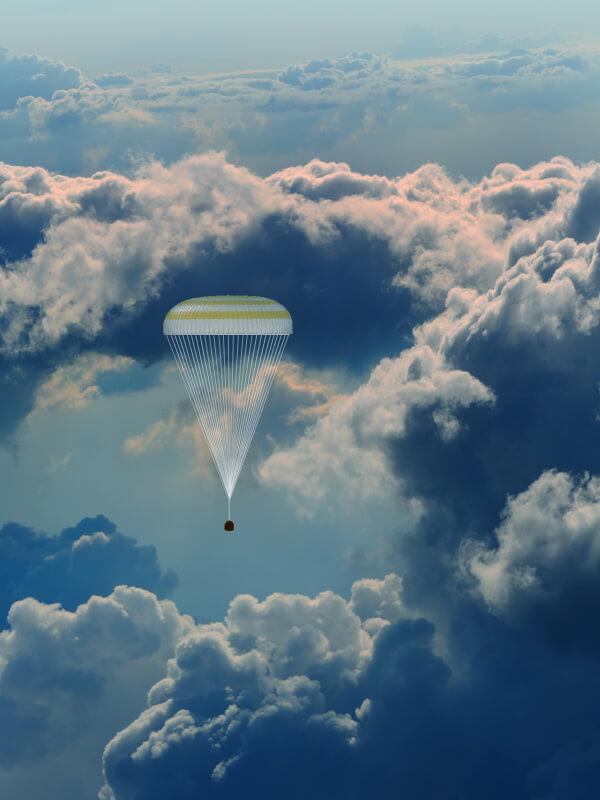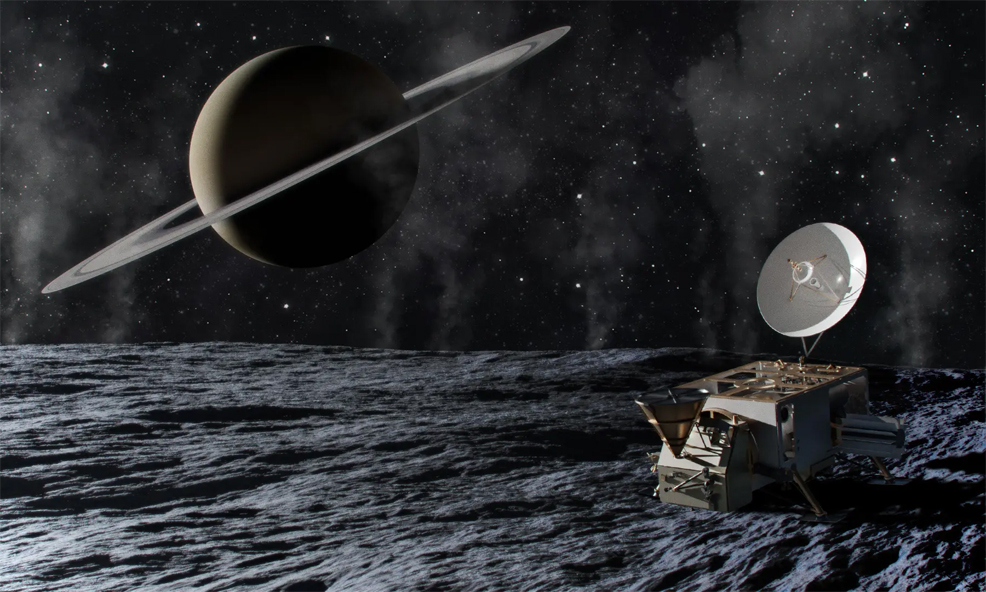
21st April 2022 Report recommends future NASA missions The latest Planetary Science Decadal Survey has been published. The future mission recommendations include a Uranus orbiter in the mid-2040s (the first visit to the planet since 1986) and the Enceladus Orbilander (landing in the early 2050s).
Every 10 years, the National Academies of Sciences, Engineering, and Medicine (NASEM) are tasked with reviewing NASA's planetary exploration strategy and formulating a plan for the next ten years. This is known as the Decadal Survey. People from across the world (though mainly in the U.S.) produce hundreds of "white papers", each summarising an aspect of science or technology, advocating for a particular direction of research and development, or even proposing a future mission concept. Around 100 people from the community are then invited to join the review process. The latest Decadal Survey has just been completed. This time, it consisted of a steering group with six panels, divided into Mercury and the Moon, Venus, Mars, Giant Planets, Ocean Worlds, and Small Bodies. Following countless hours of discussions and refinements, the final version is now available online and runs to nearly 800 pages. The report defines 12 priority science questions to help guide mission selection and research efforts. Overall, it recommends that NASA's planetary science over the next decade should focus on expanding our knowledge of the Solar System's origins, how planets form and evolve, under what conditions life can survive and where to find potentially habitable environments in our Solar System and beyond. Covering the period from 2023 to 2032, the new Survey divides these missions into three cost sizes – small, medium, and large. Two high-priority large missions are proposed: a Uranus Orbiter and Probe (UOP) and Enceladus Orbilander (EO). With launch windows available in the early 2030s, the UOP could reach the ice giant in the early 2040s, the first spacecraft to visit in more than half a century. Unlike Voyager 2, which only briefly flew past in 1986, the UOP would orbit the planet for an extended period of time. Such a detailed study may allow scientists to better understand many of the exoplanets being discovered around other stars, 35% of which are similar to Uranus and Neptune. "We think we understand how something gets as big as Jupiter, and we think we understand how something gets to be the size of Earth and Venus. But in the middle, in that kind of sweet spot between those end-members – we don't fully understand how a world can start to grow and grow and not just carry on to become Jupiter-mass in size. A mission to Uranus could help us answer that," said Leigh Fletcher, Associate Professor in Planetary Science at Leicester University, UK, in an interview with BBC News. Other mysteries could be solved by the UOP mission, such as why the Uranian system is tilted sideways. In other words, its north and south poles are located where most planets have their equators. Scientists have speculated that a massive impact with another body may have occurred in its early history, but more evidence is needed. With an estimated cost of $4.2 billion, this flagship mission could be launched on a Falcon Heavy or similar heavy-lift vehicle, using a Jupiter gravity assist to reach its destination. The multi-year study would begin with a probe being dropped into the atmosphere – the coldest in the Solar System at −224°C (−371°F) – descending through clouds of hydrogen, helium, methane, and carbon monoxide, mixed with traces of water vapour and carbon dioxide. The orbiter would then investigate the atmosphere, magnetosphere, and rings, while also conducting a tour of the Uranian moons (27 natural satellites are currently known).
The Enceladus Orbilander (EO), estimated at $4.9 billion, is recommended by the report as NASA's second-highest priority large mission. This would search for evidence of life on Saturn's moon Enceladus. This small world, measuring 500 km (310 mi) in diameter, is about one-tenth the size of Saturn's largest moon, Titan. It has been visited previously by the two Voyager spacecraft, which flew by in 1980 and 1981, as well as the Cassini spacecraft that performed a total of 24 flybys between 2005 and 2015. Cassini provided strong evidence that Enceladus contains an ocean with an energy source, nutrients, and organic molecules, making it one of the best places for the study of potentially habitable environments for extraterrestrial life. The probe found water-rich plumes venting into space from cryovolcanoes and geysers, more than 100 of which have now been identified. It passed through one of these jets in 2015, a mere 49 km (30 mi) above the moon. The proposed EO spacecraft would get an even closer look at Enceladus. After spending a year and a half orbiting the moon and sampling plumes, it would deploy a lander on the surface. During a two-year study, this could perform detailed analysis of fresh material originating from the interior ocean. The water in Jupiter's moon Europa, by contrast, is located under a much thicker layer of ice, making Enceladus a more logical choice for study. Unfortunately, the timeline for the EO is even further into the future than the UOP mission. Launch is suggested for the late 2030s, but the lander is unlikely to touch the surface of Enceladus until the early 2050s, making this a rather long-term proposal. These lengthy timelines are quite common in astronomy, however, especially with NASA's flagship missions – the James Webb Space Telescope, for example, began development in the early 1990s and is only just beginning operations in 2022.
In addition to the flagship UOP and EO projects, various medium and smaller missions are recommended. These include a Centaur probe, which would send an orbiter and lander to one of the small bodies that lie in unstable orbits between the Jupiter trojans and Kuiper belt. Other recommendations are a comet surface sample return, a Ceres sample return (the largest body in the main asteroid belt), Venus In Situ Explorer, Saturn probe and Titan orbiter. The report also endorses a mission concept called Endurance-A that would send a rover to the Moon's South Pole on a commercial lander, collecting 100 kilograms of samples on a journey lasting 2,000 km (1,242 mi) across the basin. The rocks and dust would eventually be returned to Earth on a crewed Artemis mission. NASA should maintain the Mars Exploration Program (MEP) and prioritise the Mars Life Explorer (MLE) as the next medium-class MEP mission, the report says. While the Mars Sample Return (MSR) looks for ancient biosignatures, the MLE would seek extant life and assess modern habitability. Alongside the many exploration missions, the Decadal Survey reviews a number of planetary defence programs. It advises NASA to accelerate development of the much-delayed NEO Surveyor – a space-based infrared telescope designed to spot potentially hazardous asteroids. After the Double Asteroid Redirection Test (DART), the next highest priority planetary defence demonstration mission should be a rapid-response, flyby reconnaissance mission to a challenging NEO of between 50 and 100 metres in diameter, the report states. NASA's planetary technology funding has declined over recent years to just 4% and now falls short of recommended levels of investment. The report urges the agency's Planetary Science Division to fund technology advancement at an average of 6% to 8% of its budget to accomplish the strategic research and missions being prioritised. "This report sets out an ambitious but practicable vision for advancing the frontiers of planetary science, astrobiology, and planetary defence in the next decade," said Robin Canup, assistant vice president of the Planetary Sciences Directorate at the Southwest Research Institute, and co-chair of the National Academies' steering committee for the Decadal Survey. "This recommended portfolio of missions, high-priority research activities, and technology development will produce transformative advances in human knowledge and understanding about the origin and evolution of the Solar System, and of life and the habitability of other bodies beyond Earth."
Comments »
If you enjoyed this article, please consider sharing it:
|









